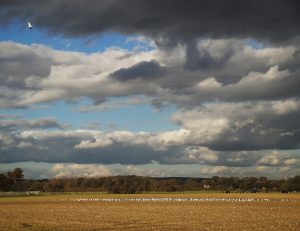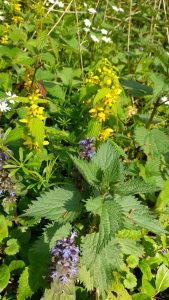Our Elusive Water Voles August 2025
By Kerry Williams: Communications Officer – Conservation
If you’re on a reedbed ramble and hear a ‘plop’, you might have just missed one. Although active during the day, Water Voles are extremely shy and quiet. Given their rarity and secrecy, it’s a wonder how anyone even knows they are there. So, here’s a few tips.
Voles vs. Rats
As a semi-aquatic rodent, Water Voles are often referred to as ‘water rats’. You could mistake one for a Brown Rat, but they are quite different. Water Voles have a blunt nose, a furry tail and small ears. Rats have pointier faces, long hairless tails, and rounded ears. And although I have nothing against Rats, Water Voles are super cute.
Food caches
A cache of riverside nibbled grass stems can be a give-away. These often lie outside a discrete riverbank burrow. Continuing the ratty-confusion-theme, Brown Rats exhibit similar nibbly behaviours. However, Water Voles munch grasses at a neat 45-degree angle, whereas Rat teeth marks are a bit more erratic.
Latrines
Collections of rounded, tic-tac shaped droppings, known as latrines, are what to look for along the water’s edge. These tidy deposits are a calling card for territory marking. Although the droppings are scentless, the Voles rub their hind legs on their scent glands and stamp on the droppings to leave a scent. A glamorous task.
But it’s not all idyllic grass-nibbling and poop-stamping; our Water Voles are at risk. Threatened by pollution, climate change, habitat loss, and predation by invasive non-native American Mink, our Water Voles are up against it. Once found in nearly every waterway in England, this protected species has declined by a staggering 90% since the early 1970s and are now listed as Endangered on the Great Britain and England Red List.
It sounds bleak, but there is good news ahead. Conservation organisations are protecting the species by monitoring and managing the population of American Mink. And there’s things you can do. By keeping pets out of waterways, you can prevent pollution of our precious rivers by pet flea treatments. By taking your litter home, you can prevent bins over-flowing into vital Water Vole habitat. To help monitor the population, you can record sightings on iRecord, via the website or app, which are shared with the Sussex Biodiversity Records Centre.
By taking action to support healthy rivers, balanced ecosystems, and robust monitoring we can contribute to bringing our Water Voles back from the brink of extinction to their rightful place in our flourishing waterways.



